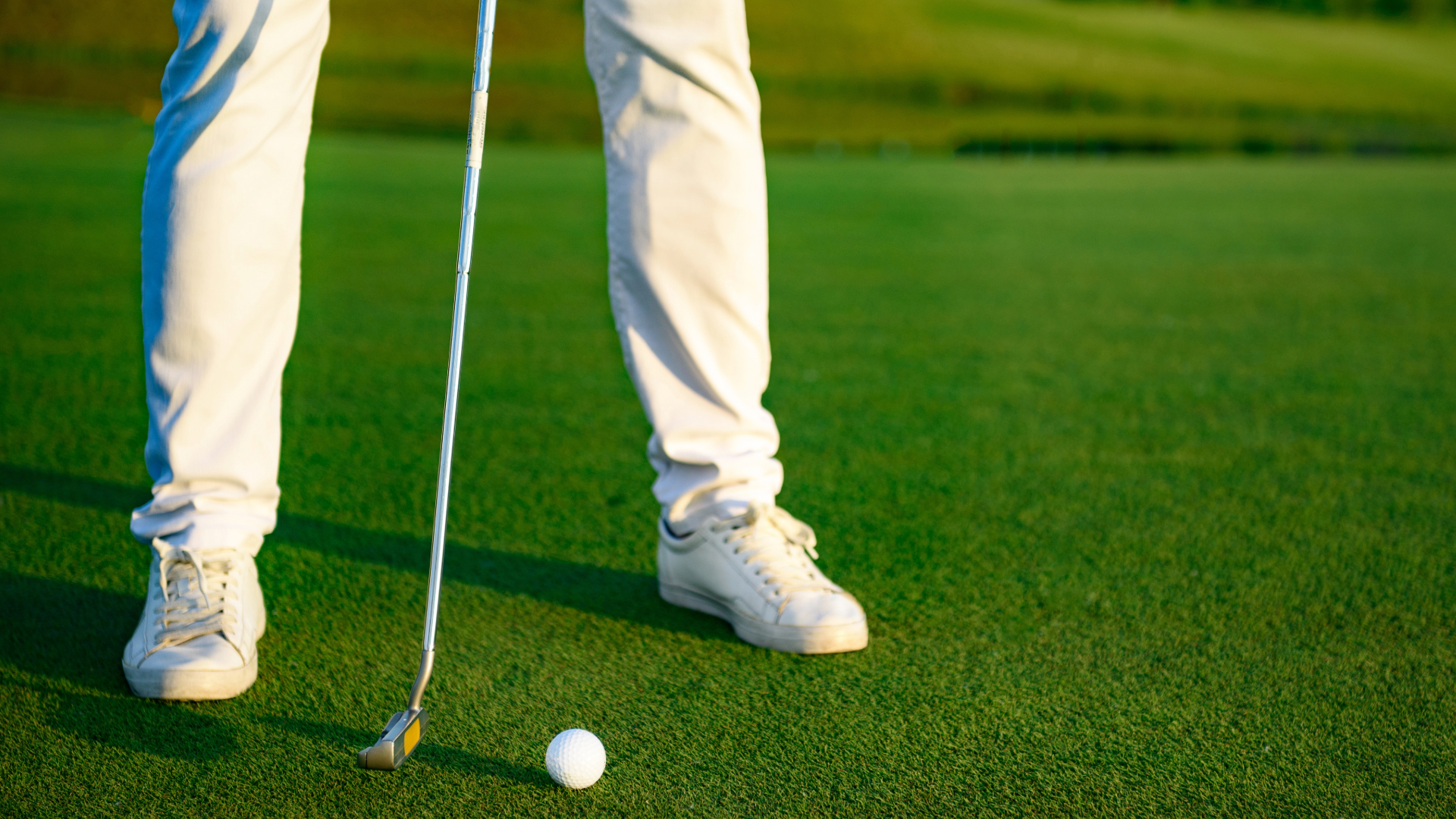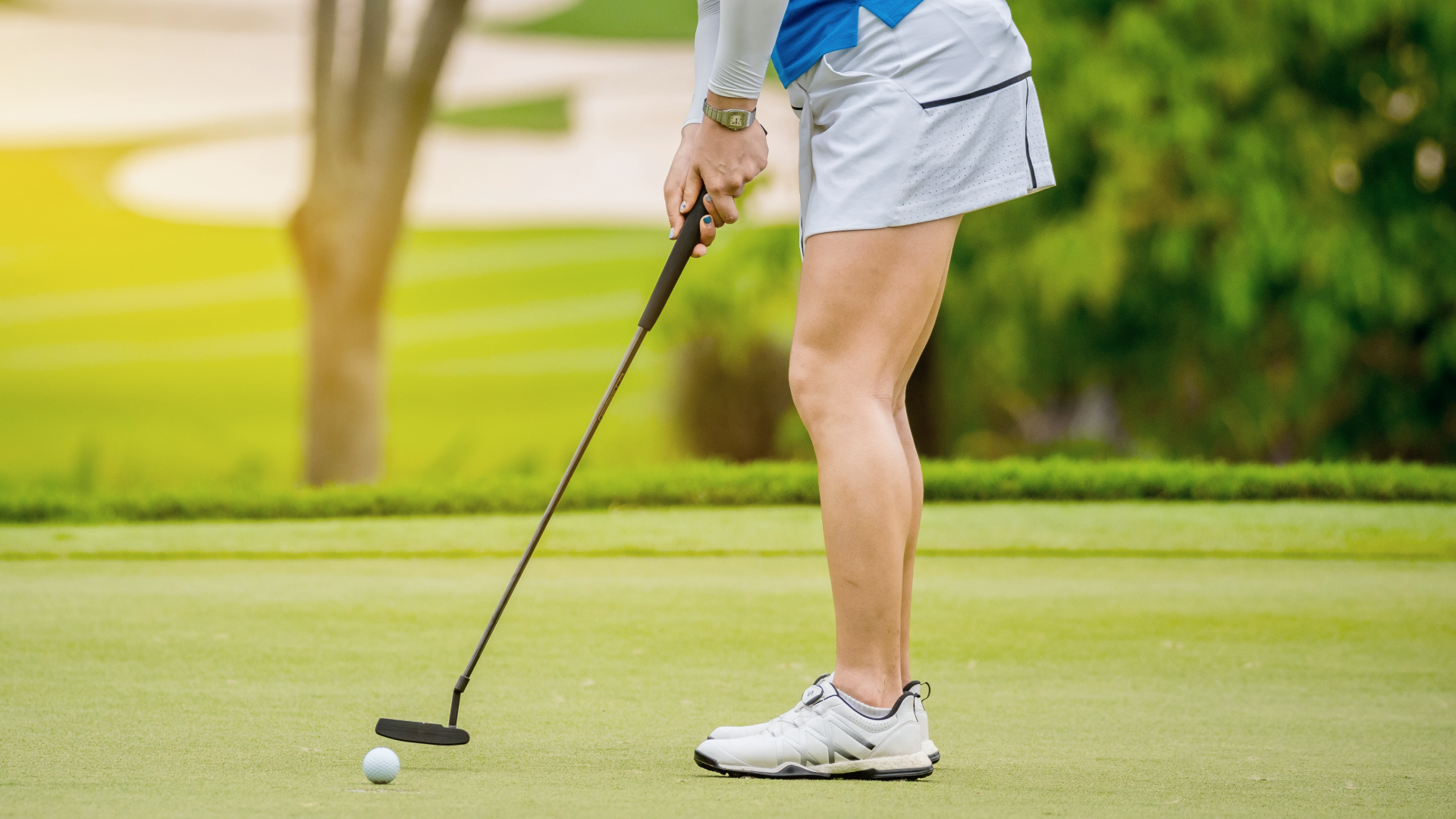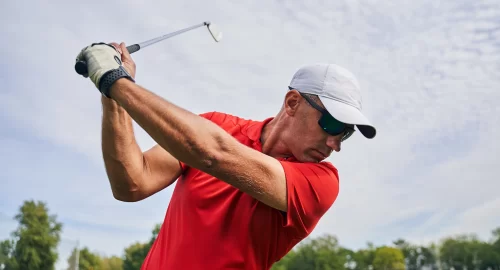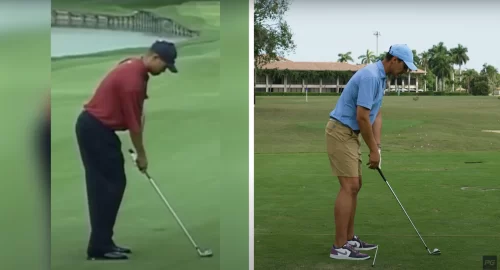
When you begin to learn the basics of golf, your setup stance and grip are widely considered to be the most important part.
As your game improves and scores lower, you likely move away from worrying about golf foot placement. Any successful golf professional will tell you this is a mistake.
The position of our feet in golf can determine the point of impact, change distances, help improve balance, and generate straight shots. Here are all the details you need to upgrade your golf foot placement to shoot lower scores and improve your golf swing overall!
How Does Golf Foot Placement Impact The Golf Swing?
Your foot placement is more than just going with “shoulder width apart” as it’s often taught.
Your foot placement in the golf swing can impact the following major components of your swing:
- Balance and stability: helps get a stable base to start every shot
- Increased power: transfers energy from the ground forces that transfer into the swing and generates speed
- Shot shape control: slight adjustments to foot placement makes it easy to control a draw or fade
- Consistency: placing your feet the same every time makes it easier to have a consistent swing
- Injury prevention: correct foot placement helps players who struggle with mobility
Golf Foot Placement vs. Ball Placement: What’s The Difference?
Golf foot placement describes the width of your feet and the angle at which they are turned at setup. Ball position or ball placement is the location of the ball in relation to the feet. When you change golf foot placement, let’s say by fanning out the lead toe, the ball position has not changed.
For more on how these two work together, you can check out this blog post.
7 Can’t Miss Tips for Better Golf Foot Placement
If you feel like you are inconsistently placing your feet, or the position of your feet in your swing is not helping you generate power, here are 7 tips to help get your game to the next level.

1. Create a Stable Base for Power
The base of power that a 5’1” tall woman needs and the base that a 6’4” tall man needs will likely look a little different. The general rule of thumb is to place your feet shoulder-width apart.
However, this is not necessarily perfect for every golfer.
If you need to go slightly wider than shoulder width, go for it. Always make sure you can rotate and strike the ball consistently, but having stability is key for generating power.
2. Rotate the Front Foot For Better Hip Rotation
Hip rotation through the golf ball is painful for some players. A slight flare out of the front foot can relieve a little pressure in the hip joint.
Once that pressure is relieved, it becomes much easier to swing through the golf ball at full speed. Additional hip rotation, a stronger follow-through, and a square clubface will lead to more power and consistency.
3. Make Adjustments Based On The Shot
Once you get your standard stance down for your mid-iron golf shots, be aware that it may change with the club you have in your hand.
The driver requires a wider stance, and short irons need a more narrow stance.
In addition, some golfers play with a wider stance in windy weather to help promote better balance. You may also see players taking a narrow stance when hitting a punch shot or getting the ball back into play.
Unfortunately, golf foot placement is not the same for every shot. However, you can still become consistent with your foot placement for each of these shots.
4. Change Your Foot Placement For Easy Fade/Draw
One of the easiest ways to hit a draw or a fade is to adjust your foot position slightly. If you want to hit a fade, move your front foot back just a little, creating more of an open stance. The opposite is true for a draw.
By putting the back foot just an inch or so back at setup, you should have an easier time getting the club on a draw path.
5. Include Proper Foot Placement As Part of Your Pre Shot Routine
Developing muscle memory is the best way to ensure correct foot placement. The more you pay attention to the correct placement, the easier it is to repeat.
Get better at foot placement by making it part of your pre-shot routine. Start learning this on the range and place alignment sticks down to help you see the best place to stand. Pay close attention to the position where you have the most consistency and power.
6. Open The Back Toe For More Width
Generally speaking, golfers keep their back toe, foot, and leg square during the swing. This provides a strong side to rotate and coil against.
It’s a great way to increase power and torque.
However, if you are a player who is struggling with width in the golf swing, you can open this back toe for a great rotation and width. Many golfers will do this for a hole requiring a long drive.
Experiment with this on the longer clubs, but keep the back toe square for short shots.
7. Foot Placement Gets Narrow The Closer You Get To The Hole
Aside from putting (which is typically a shoulder-width apart type stance), your foot placement should narrow as you get closer to the hole.
For short chip and pitch shots, your feet will be much narrower than shoulder width apart.
Narrowing the stance will make it easier to control the distance and improve the overall launch of the golf shot. In addition, the narrow stance creates less room for error when it comes to skulled or chunked golf shots.
If you need to take just a few yards off on an approach shot, sometimes this narrower stance and moving your hands down the grip a bit could be all you need.
Implement Proper Placement for Your Best Swing Yet
Now that you have a better understanding of proper golf foot placement, it’s time to get out there and experiment with it. Foot placement is a simple adjustment, but it can have big impacts on your game as a whole. Start to get your feet in the right spot, and you will become more accurate, get better distance, and make consistent, clean contact with the golf ball. It’s worth the time invested!

